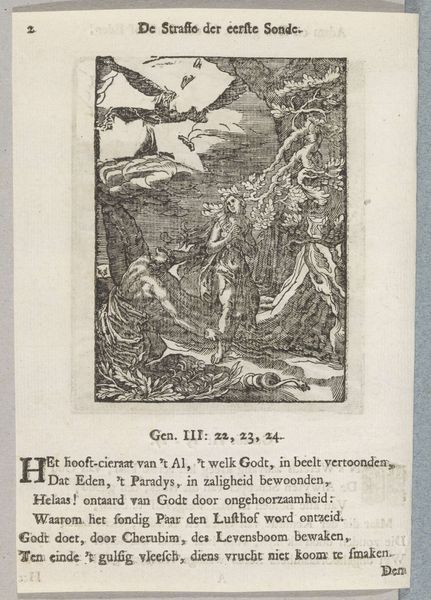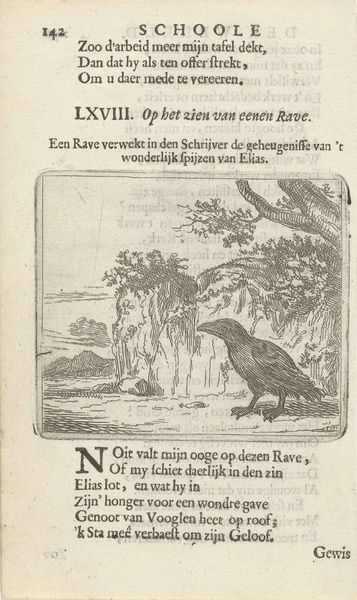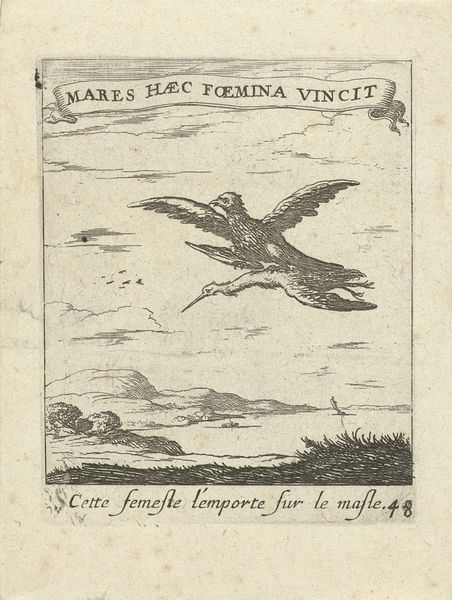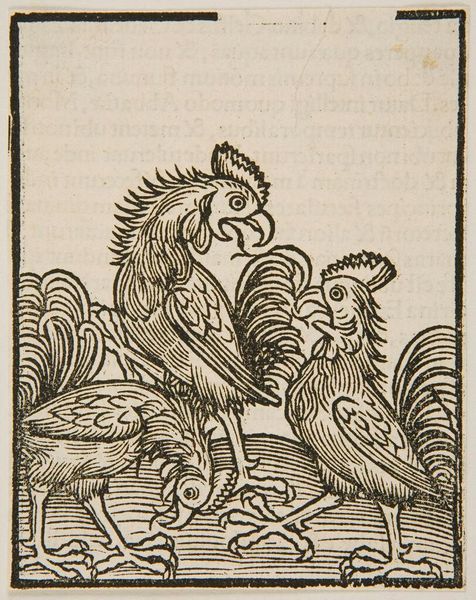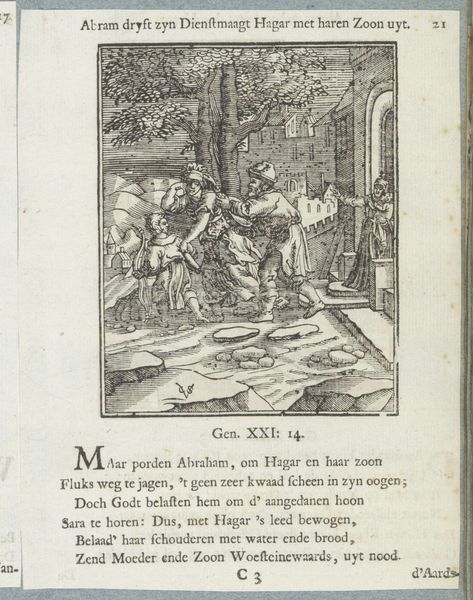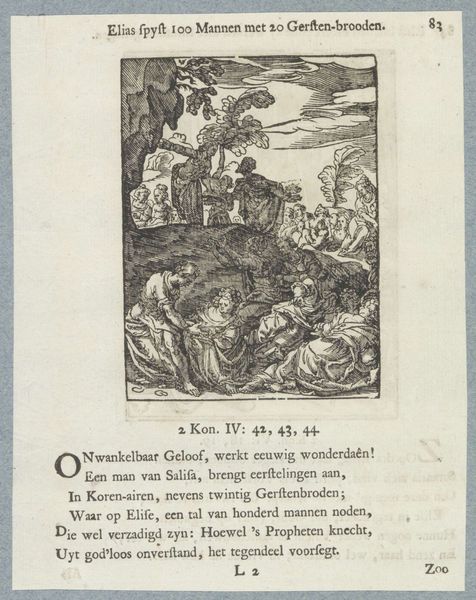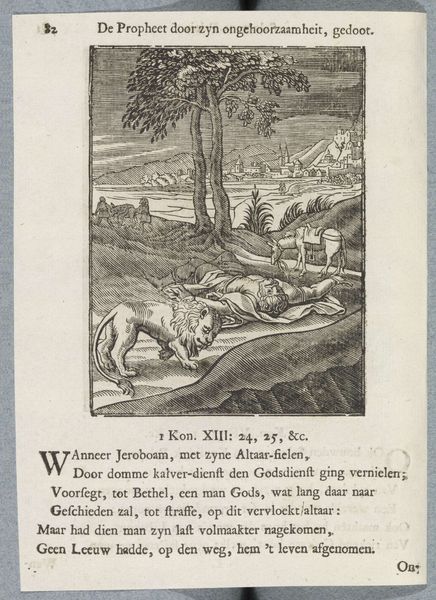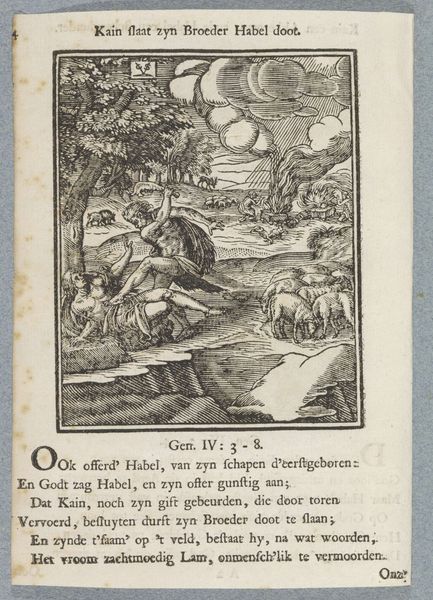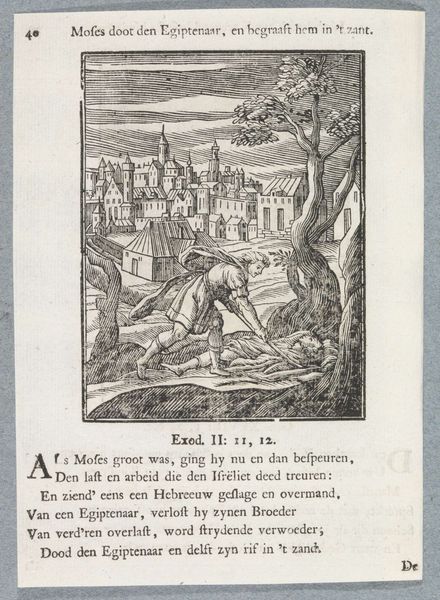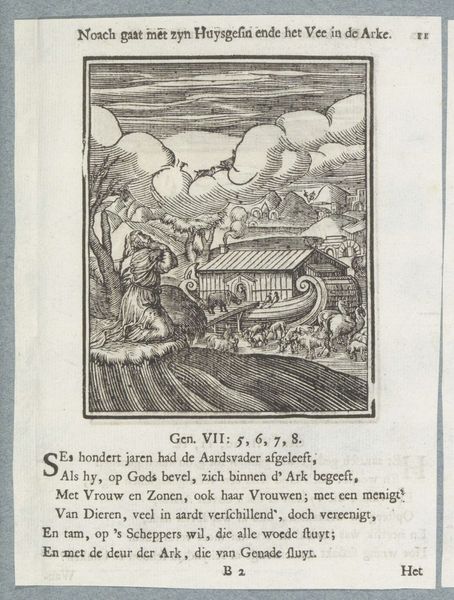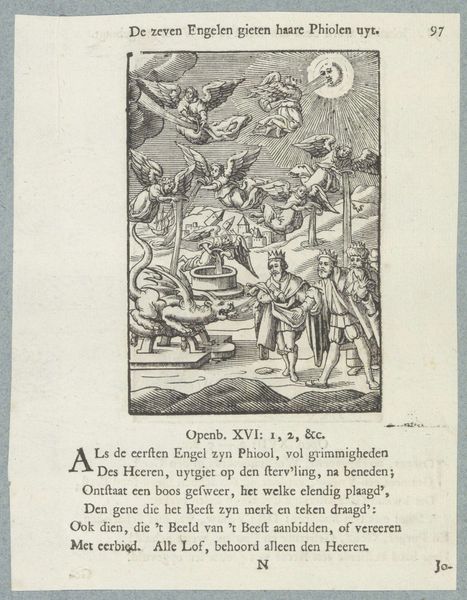
print, paper, engraving
#
dutch-golden-age
# print
#
paper
#
genre-painting
#
engraving
Dimensions: height 70 mm, width 84 mm, height 156 mm, width 95 mm
Copyright: Rijks Museum: Open Domain
Arnold Houbraken created this print, titled "Pauw bij een huis," sometime between 1660 and 1719 using etching. Houbraken was a Dutch painter and art theorist from Dordrecht, positioned within a society undergoing significant shifts in its cultural and moral values. In this period, the peacock was a symbol of vanity and pride, often associated with the wealthy elite. Consider how the inclusion of a house in the backdrop subtly reinforces a narrative about social class and status. The peacock's presence beside a domestic setting raises questions about domesticity and wealth, hinting at underlying tensions between appearance and reality. The accompanying text, which critiques hypocrisy and the superficiality of appearances, encourages us to consider how societal expectations of beauty and status often mask deeper truths. It serves as a reminder of the performative nature of social identities.
Comments
No comments
Be the first to comment and join the conversation on the ultimate creative platform.
